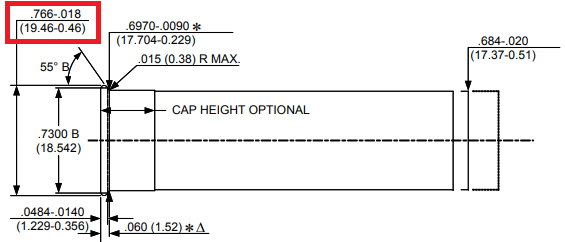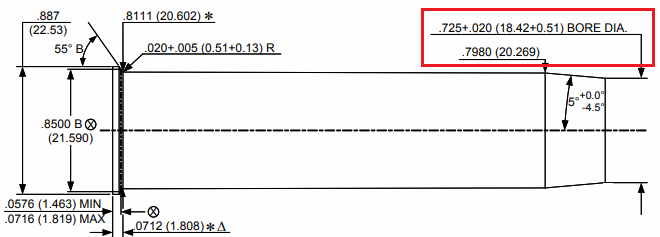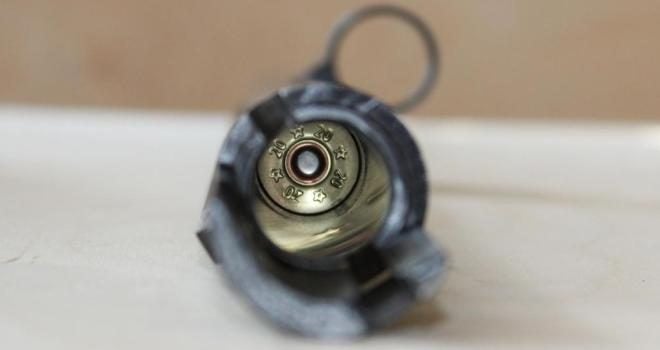USOG, one of the smaller but very interesting YouTube channels, has published a video demonstrating what happens when you accidentally load a 20 gauge shell into a 12 gauge shotgun. Well, nothing will happen until you think there is no round in the chamber or there was a failure to feed and chamber a 12 gauge shell right behind the 20 gauge round that is comfortably “headspaced” on the forcing cone of the 12 gauge chamber as shown in the top image of this article.
Exactly! What will happen next, when you pull the trigger is a KABOOM. USOG simulated this accident. Let’s watch the video.
Believe or not, that is exactly why all 20 gauge shells are yellow. I’ve seen clear 20 gauge hulls but this is rather an exception. Also, note that no other gauge has yellow shells. This is done specifically to provide a visual reference and try to prevent accidentally loading 20 gauge shells in 12 gauge chambers.

20 gauge shell drawing. Compare the rim dimension of the 20 ga shell to …

… to the forcing cone dimensions (those in red rectangle) of the 12 ga chamber
The yellow color of 20 ga shells is not just an unofficial industry standard. If you open the Shotshell Standards file (pdf file) on the SAAMI website, on page 41 you’ll find the following text:
The color yellow has been reserved for 20-gauge ammunition. This ammunition shall have a body tube that is primarily yellow. Yellow shall not be used for any other gauge/bore shotshell body.
No other recommendations are made as to the color of service body tubes for other gauges/bores.
Now, if you are an avid shotgunner, you can probably tell the difference between a 12 gauge and 20 gauge shells from a distance of a couple of yards even if they had the same color. However, for most people, it can be quite easy to accidentally mix these shells especially if they own shotguns of both gauges. So the yellow color of 20 gauge shells is a really handy and simple way to decrease the possibility of such accidents.
 Your Privacy Choices
Your Privacy Choices
